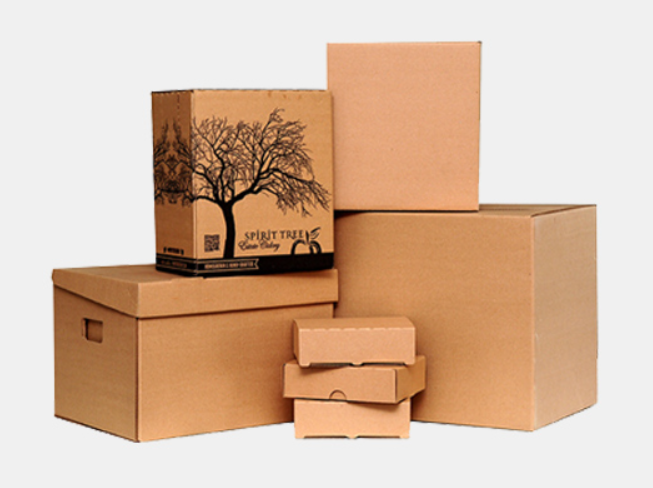In today’s fast-paced global economy, the demand for reliable, durable, and eco-friendly packaging has never been higher. At the heart of this demand stands the corrugated box—an unsung hero in the world of logistics, retail, and e-commerce. Behind every sturdy box lies the expertise of corrugated box manufacturers who ensure businesses can package, protect, and ship their products efficiently. This article explores the world of corrugated box manufacturing, from production processes and innovations to choosing the right supplier for your business needs.
What Is a Corrugated Box?
Corrugated boxes are made from a special type of paperboard that consists of a fluted (wavy) layer sandwiched between two flat linerboards. This design provides enhanced strength, cushioning, and rigidity, making it ideal for protecting goods during transportation and storage.
There are three basic types of corrugated boxes:
- Single-wall: One layer of fluting between two liners.
- Double-wall: Two layers of fluting and three liners for added strength.
- Triple-wall: Three layers of fluting and four liners, used for heavy-duty applications.
The Role of Corrugated Box Manufacturers
Corrugated box manufacturers Canada play a critical role in supply chains across industries such as e-commerce, food & beverage, pharmaceuticals, electronics, and more. Their responsibilities go beyond simply producing boxes—they help companies with:
- Custom packaging solutions
- Bulk manufacturing and supply
- Sustainable packaging innovations
- Branding and printing on packaging
The Manufacturing Process
The production of corrugated boxes involves several precise steps:
1. Paper Production
The process starts with making kraft paper from virgin or recycled wood pulp. This paper is used for both the fluted medium and the outer liners.
2. Corrugating
The paper is passed through corrugating machines that heat, steam, and mold it into the wavy pattern that gives corrugated cardboard its strength.
3. Lamination
The fluted paper is glued between two flat liners using starch-based adhesives. This creates the basic corrugated board.
4. Cutting and Printing
The corrugated sheets are cut to the required size and can be printed with branding or product information using flexographic or digital printing.
5. Box Formation
The printed sheets are then scored, slotted, folded, and glued or stitched to form finished boxes ready for shipment.
Key Qualities of a Good Corrugated Box Manufacturer
If you’re a business looking for a reliable corrugated box supplier, here are some qualities to look for:
1. Customization Capabilities
A good manufacturer should offer custom sizes, thicknesses, coatings, and print options to suit your product and branding needs.
2. Production Scale
Depending on your volume, you’ll need a manufacturer that can handle both small and large-scale production efficiently.
3. Quality Assurance
Look for certifications such as ISO 9001, FSC (Forest Stewardship Council), or industry-specific standards that ensure consistent quality.
4. Sustainability
With increasing awareness about the environment, choose manufacturers that use recycled materials and adopt eco-friendly practices.
5. Turnaround Time
Fast and reliable delivery is critical, especially for e-commerce and retail businesses that rely on steady inventory flow.
Benefits of Corrugated Packaging
Corrugated boxes are preferred for a variety of reasons:
- Strength and Durability: Protects contents from damage during transit.
- Lightweight: Easier to handle and reduces shipping costs.
- Recyclable and Biodegradable: Environmentally friendly.
- Cost-Effective: Inexpensive compared to plastic or wooden alternatives.
- Customizable: Can be printed, cut, and shaped as needed.
Trends and Innovations in the Industry
Corrugated box manufacturers are adapting to new trends, such as:
- Smart Packaging: QR codes and RFID tags integrated into boxes for tracking and customer engagement.
- Digital Printing: High-quality prints for better brand visibility.
- Sustainable Materials: Use of soy-based inks, water-based adhesives, and 100% recycled content.
- E-commerce Ready Packaging: Easy-open features, frustration-free designs, and branded unboxing experiences.
Industries Served by Corrugated Box Manufacturers
Corrugated packaging is used in nearly every industry. Some examples include:
- Retail & E-Commerce: Shipping boxes, subscription boxes, display packaging.
- Food & Beverage: Pizza boxes, beverage carriers, fresh produce trays.
- Electronics: Protective inserts and anti-static corrugated boxes.
- Pharmaceuticals: Temperature-controlled and tamper-proof packaging.
- Apparel & Footwear: Custom printed boxes with branding elements.
How to Choose the Right Corrugated Box Manufacturer
When choosing a supplier, consider:
- Local vs. Overseas Manufacturing: Local suppliers offer faster turnaround; overseas may offer cost savings but involve longer lead times.
- Customer Support: Responsive service is crucial for ongoing orders and troubleshooting.
- Portfolio and Reviews: Check for client testimonials and case studies.
- Sample Testing: Request samples to test for quality, strength, and suitability before placing large orders.
Final Thoughts
Corrugated box manufacturers are more than just box makers—they are strategic partners in the logistics and branding chain. Whether you’re a small startup launching a new product or a large enterprise shipping goods worldwide, working with a reliable and innovative corrugated box manufacturer ensures your products reach customers safely, sustainably, and in style.
As sustainability and e-commerce continue to grow, the importance of well-made corrugated packaging will only rise. Choosing the right manufacturer is a smart investment that pays off in customer satisfaction, brand image, and cost efficiency.







